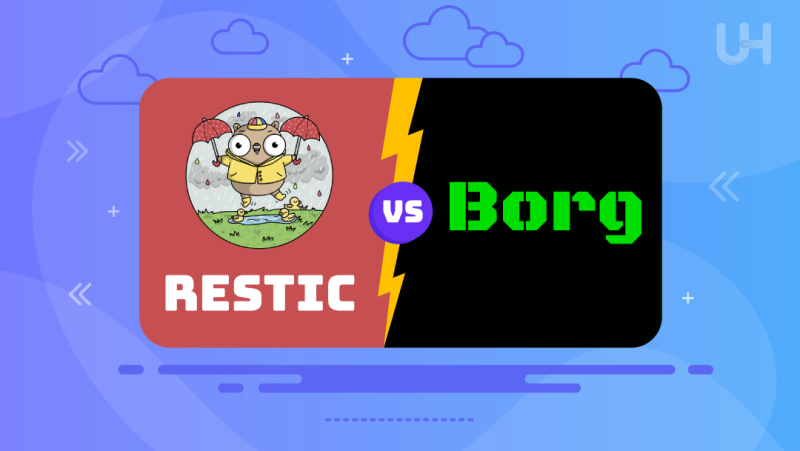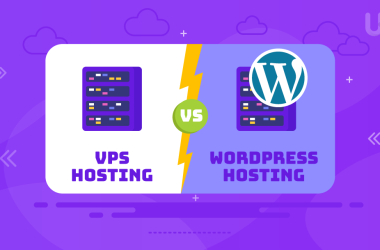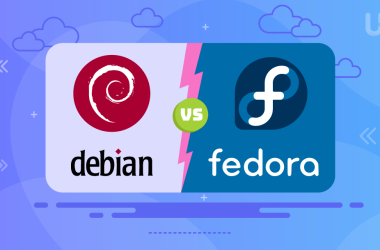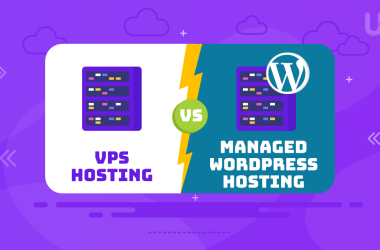In the current digital age, dependable backup solutions are essential to safeguard data against any potential loss. Among the popular open-source, go-to solutions within this sphere are Restic vs Borg. Their maturation into complex and functionally rich tools is influenced by the vast amount of data created daily and potential hazards related to data loss for users and businesses alike.
In this article, we will examine the key differences and advantages of Restic and Borg to help people decide which is the appropriate backup solution. By examining their features, performance, and use cases, you will be better equipped with the information necessary to make your choice.
What is Restic?
Restic is a fast, secure, efficient backup program supporting many backends. It is easy to use, safe, and efficient in handling vast amounts of data, and it ensures that Restic users can do data backups without any unnecessary complexity. It has an easy setup process that is accessible to both beginners and advanced technical professionals alike.
By default, Restic encrypts all data with AES-256 in counter mode and authenticates it using Poly1305-AES. This means your backups are secured and protected from integrity concerns. If somebody gets hold of your storage in any way, this level of security prevents them from reading your data without a properly corresponding encryption key.
Key Features of Restic
- Simplicity: Easy configuration and usage are some of Restic’s primary goals. Simple, understandable commands that are usable even by less technical people.
- Security: Backups are encrypted and authenticated. This means that no one will access your data because it’s fully secured from unauthorized access.
- Efficiency: Restic dedicates deduplication to reducing storage usage. That’s to say, only changes in data are stored, reducing the space required for backups.
- Versatility: Restic supports multiple storage backends, including local disk, SFTP, Amazon S3, and Google Cloud Storage, among many others. This flexibility allows the user to choose the best solution for their needs.
Restic Backup: How It Works
Restic works by creating snapshots of your data. When a backup is run, Restic checks the data against the last snapshot for changes and includes only that changed data in the incremental backup. This slashes both time and storage space for every succeeding backup.
Another feature that makes Restic so efficient is the deduplication feature. There is no duplication since Restic only stores unique chunks of data, ensuring that your storage space is optimized. More precisely, in environments where storage comes at a cost, this minimizes the space needed to maintain comprehensive backups.
Further, all the encryption and authentication activities in Restic happen in an automated manner with little intervention by the user. No user, therefore, has to bother about the encryption of their data or managing encryption keys. Restic does this in the background, thus giving you a nascent backup experience while at the same time ensuring your data is safe at all times.
What is Borg?
Another powerful open-source solution to back up data is Borg, formerly known as BorgBackup. This system concentrates on achieving the fastest execution and efficiency possible through deduplication and compression. Borg has some excellent security functions, where every backup is first cryptographically secured against access by unauthorized third parties.
Borg was developed for users who need fast and reliable backup solutions. This program applies a chunk-based approach to data storage security, making it very good at handling big data sets and ensuring the software is suitable for businesses and users with large requirements regarding data storage. This means performance in backing up and restoring is highly optimized, ensuring minimal downtime and swift recovery in case data goes wrong.
Borg’s encryption functionality is already sufficient and quite near industry standards, including allowing authenticated encryption for confidentiality and integrity. This fact alone should imply that users have enough trust in Borg to keep sensitive information safe from unwarranted intrusions.
Key Features of Borg
- Speed: Borg is intended for fast backups and restores, which can be achieved by fast VPS hosting. The deduction algorithm guarantees that unique pieces of data are stored and thus strongly accelerates the process.
- Compression: Beyond deduplication, Borg compresses data for additional space savings. This dual approach makes the format highly effective in storage.
- Security: Borg uses encryption, much like Restic, to protect your data. Borg supports authenticated encryption to guarantee confidentiality and integrity simultaneously.
- Flexibility: Borg supports local filesystems, SSH hosting, and cloud services via third-party tools. Hence, it adapts to different situations and needs.
Borg Backup: How It Works
Borg works by segmenting data into chunks and recognizing unique chunks during backup. The chunks are then compressed, encrypted, and stored. When restoring is made, Borg reconstructs the chunks to create the original data; hence, it is swift for a backup. Borg’s deduplication mechanism is highly effective because it reduces the amount of data transferred and stored. It stores unique chunks of data and ‘references’ them for further backup instances. The result is that Borg is happy dealing with big datasets with close-to-minimum storage overhead.
Compression further enhances Borg’s efficiency in its backup process. By compressing the data before storing it, Borg reduces the space needed for backup storage. This proves especially useful for people with low storage resources or those who want to reduce their storage costs.
Borg encrypts and authenticates; it guarantees protection of your data during its backup. Authenticated encryption detects unauthorized modifications, providing extra protection against tampering.
Elevate Your Backup Strategy with Premium Hosting!
Ready to enhance your data protection with superior speed and reliability? Choose NVMe VPS Hosting by UltaHost to power your backup solutions like Restic and Borg. Experience lightning-fast performance, robust security, and unmatched efficiency.
Borg vs Restic: Key Differences

Comparing Restic vs Borg raises several factors. By knowing these differences, you can make a widely informed decision about which to use based on your needs and preferences.
Restic vs Borg: Ease of Use
- Restic: Fast and painless to configure and run, Restic has a simple interface. Communication through its command-line interface is accessible enough that every level of user, from a beginner to an advanced level using the technology, can use it without much hassle.
- Borg: While Borg is user-friendly, it’s only a little more complex than Restic. Borg’s CLI has advanced options that may become useful if greater control and customization are needed.
Borg vs Restic: Performance
- Restic: Due to incremental and deduplicated backups, Restic is fast and uses little space. However, it may not be as fast as Borg in some cases, specifically with extremely large datasets.
- Borg: Borg performs well, especially across large backups and restores. Their deduplication and compression mechanisms are well-optimized, so Borg is one of the fastest backup solutions available today.
Restic vs Borg: Storage Efficiency
- Restic: Because Restic performs deduplication, only data changes are actually stored, keeping storage requirements at a minimum. It currently supports multiple backends, all of which provide cost-effective storage solutions.
- Borg: It combines deduplication and compression to achieve very high storage efficiency. Such a twofold approach is especially beneficial for users with large data sets.
Borg vs Restic: Security
- Restic: Security is one of Restic’s core design principles. All data is encrypted with AES-256 and authenticated with Poly1305-AES for good protection against unauthorized access.
- Borg: Borg relies a great deal on security. It ensures the confidentiality and integrity of the data through authenticated encryption. Both tools are at almost the same level of safety; therefore, one can unquestioningly trust them for securing sensitive data.
Restic vs Borg: Flexibility
- Restic: One of Restic’s significant strengths is its broad support for different storage backends, such as cloud services, local disk, and SFTP. This enables the user to easily switch between a myriad of storage choices according to his needs.
- Borg: While Borg does have a few different natively supported backends, especially compared to Restic, third-party tools open up most of the storage solution scope under Borg.
Conclusion
The choice between Borg or Restic is a matter of needs and taste. Restic provides ease, flexibility, and solid security, so it’s recommended to any user looking for an easy and flexible backup solution. Borg stands out due to its performance, efficiency in storage, and advanced control; it’s best suited for those dealing with large datasets and requiring optimized storage management. Both tools are reliable and secure; your data will be safe and accessible.
Whether you opt for Restic or Borg, pairing it with a reliable Cloud Storage VPS from UltaHost can significantly enhance your backup strategy. Make the smart choice today and ensure your data is always safe and accessible in the cloud.
FAQ
Can Restic and Borg handle large datasets efficiently?
Yes, both use deduplication to store only changed data. Borg also compresses data, making it particularly efficient for large backups.
How do Restic and Borg manage incremental backups?
Restic creates snapshots and includes only changes in each backup. Borg stores unique data chunks, ensuring only new or changed data is backed up.
Are there specific use cases where one is more suitable than the other?
Restic is ideal for users needing simplicity and flexibility with various storage backends. Borg excels in performance and storage efficiency for large datasets.
What level of technical expertise is required to use Restic and Borg?
Restic is user-friendly for all levels, while Borg’s advanced features may require more technical expertise.
How do Restic and Borg handle encryption and data integrity?
Restic uses AES-256 encryption and Poly1305-AES for data integrity. Borg uses authenticated encryption, ensuring data confidentiality and protection against tampering.










